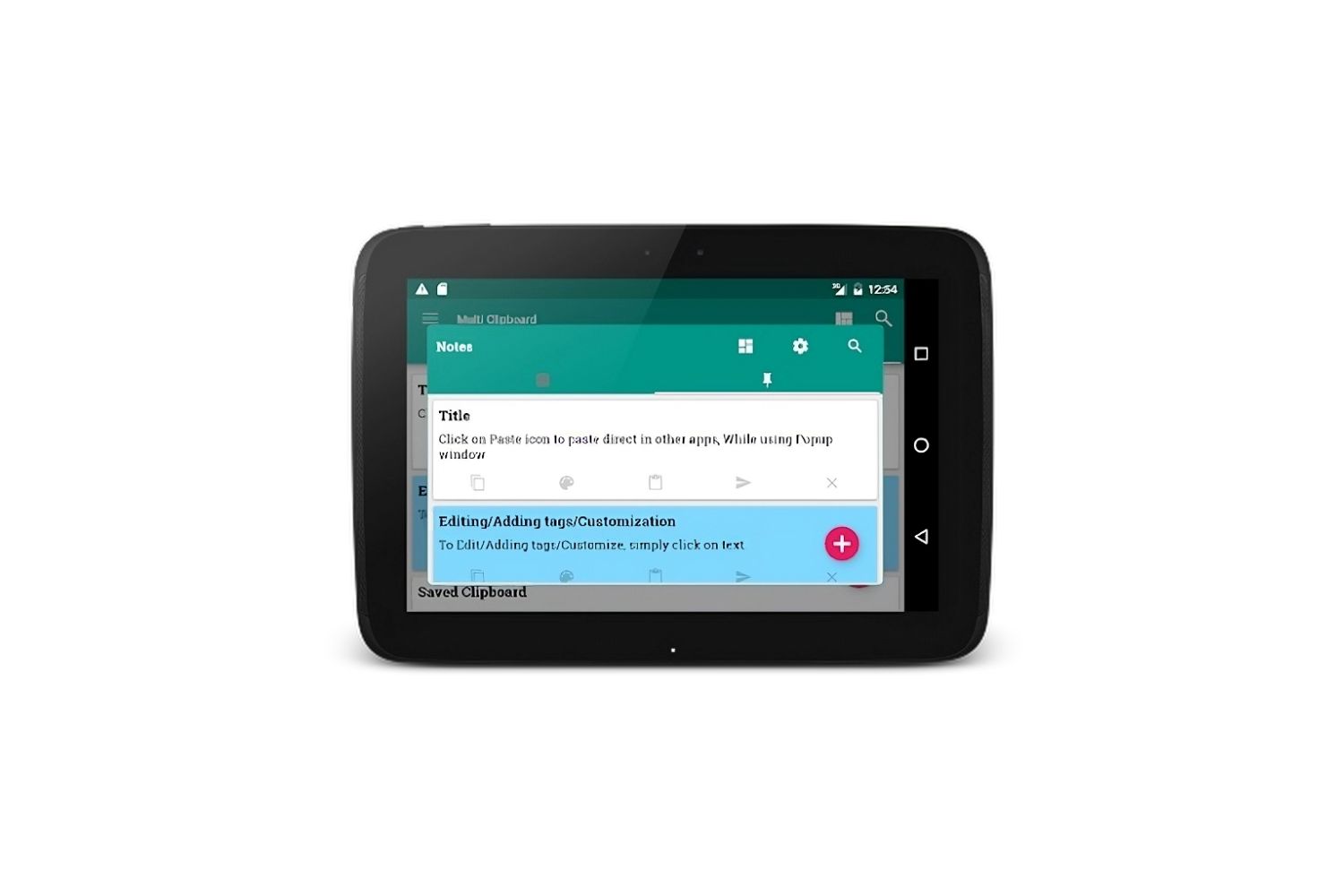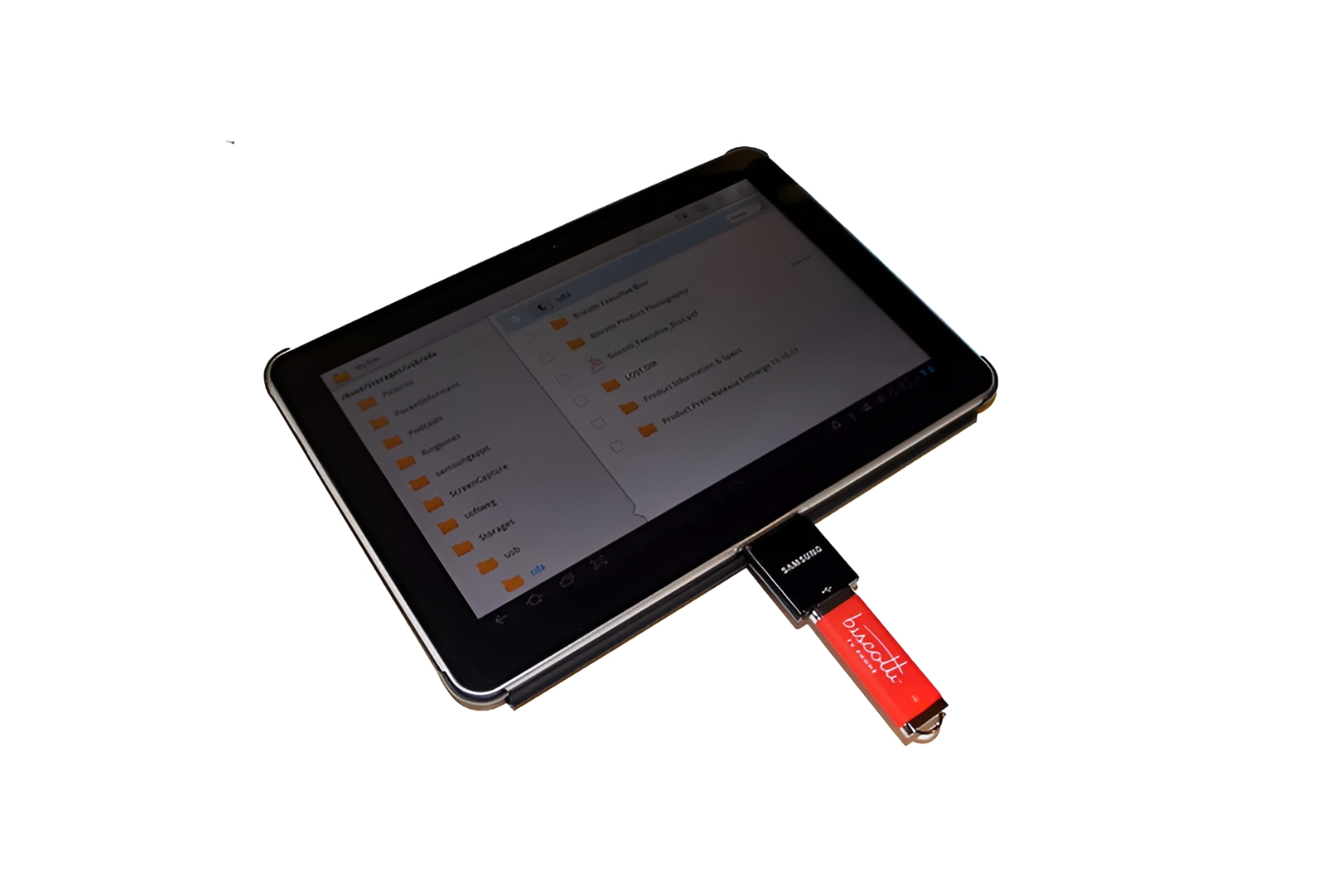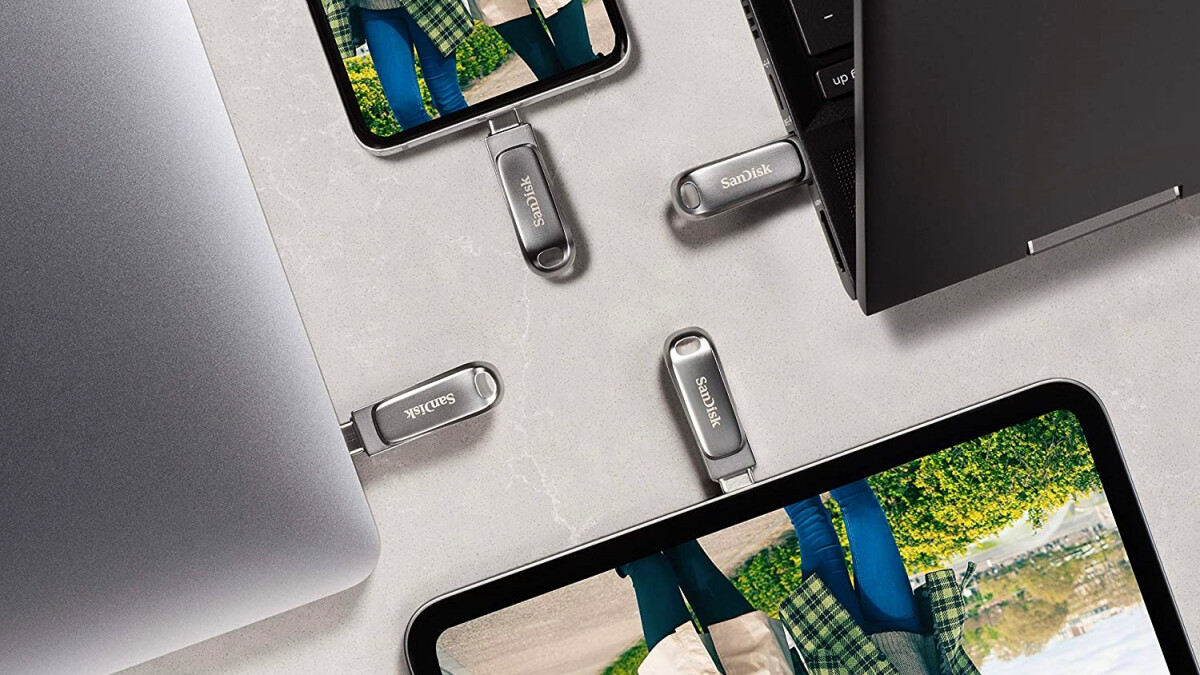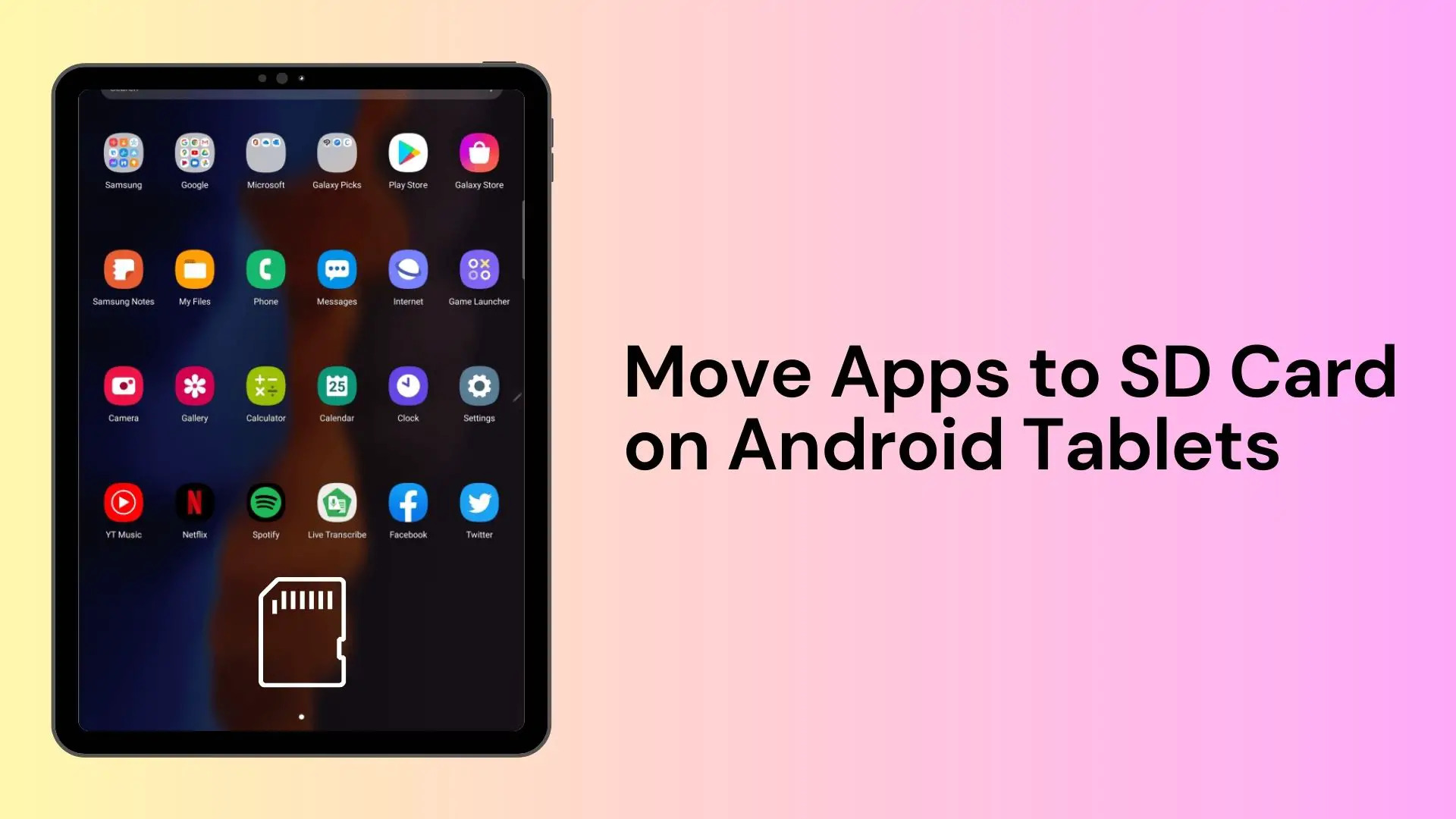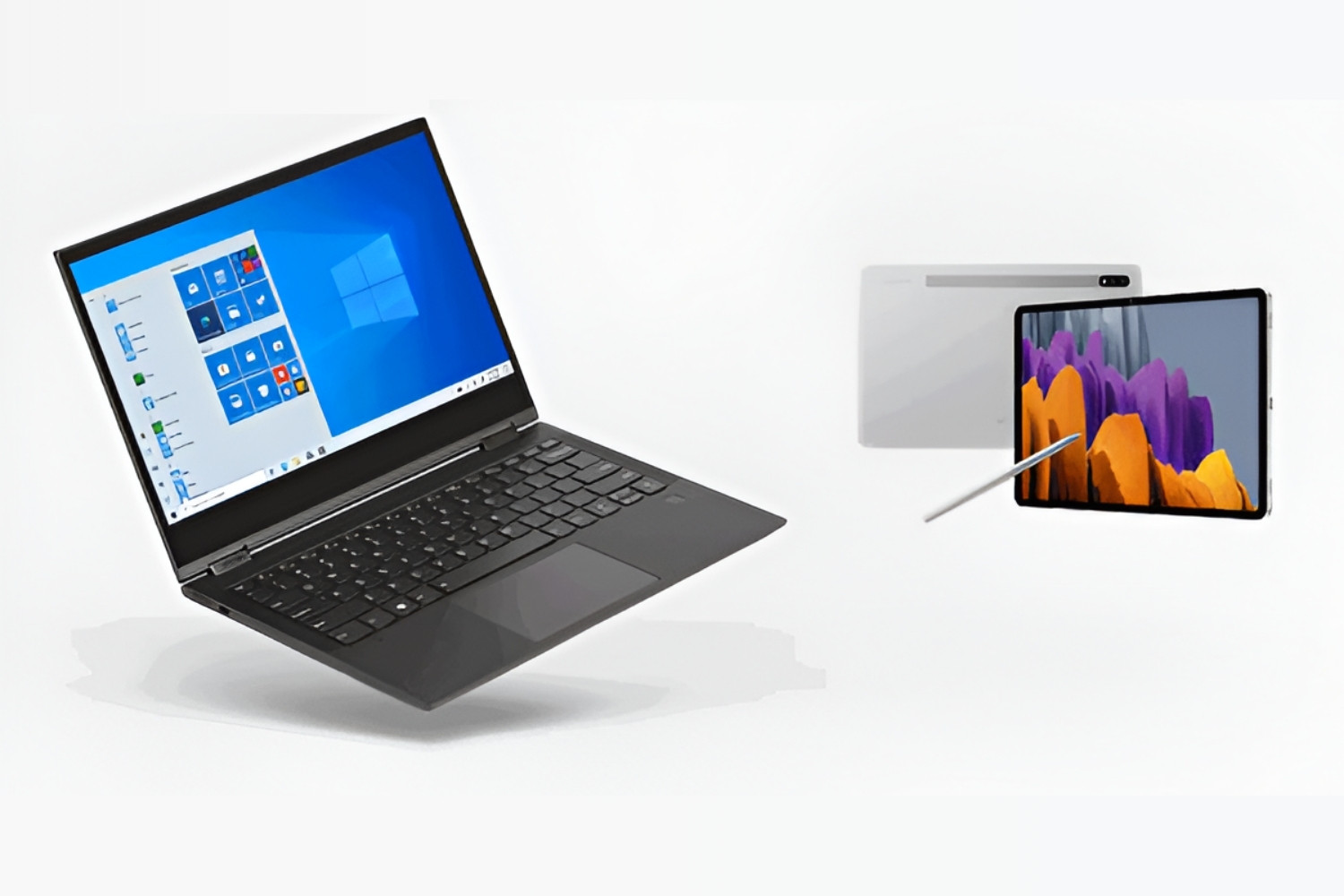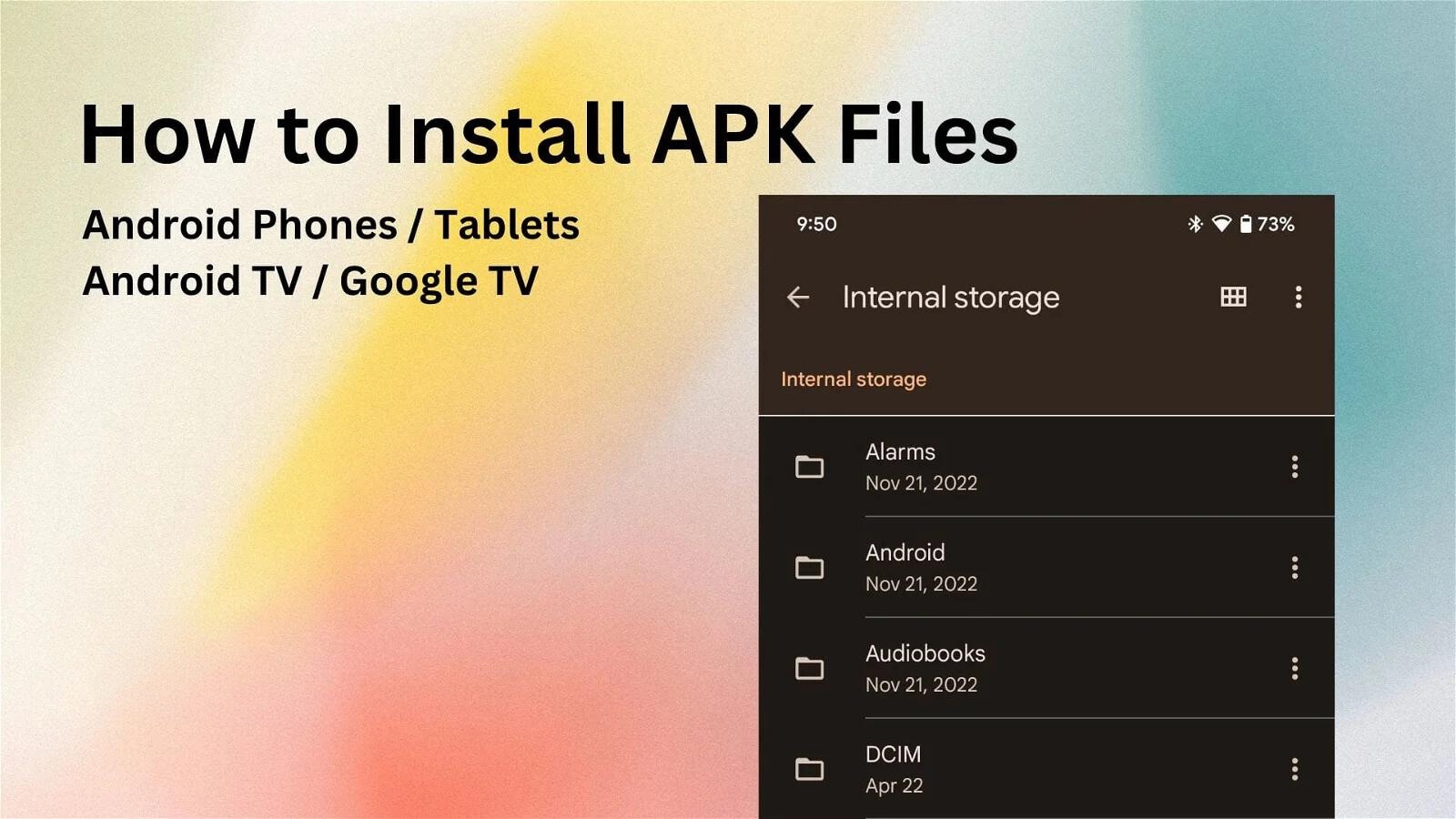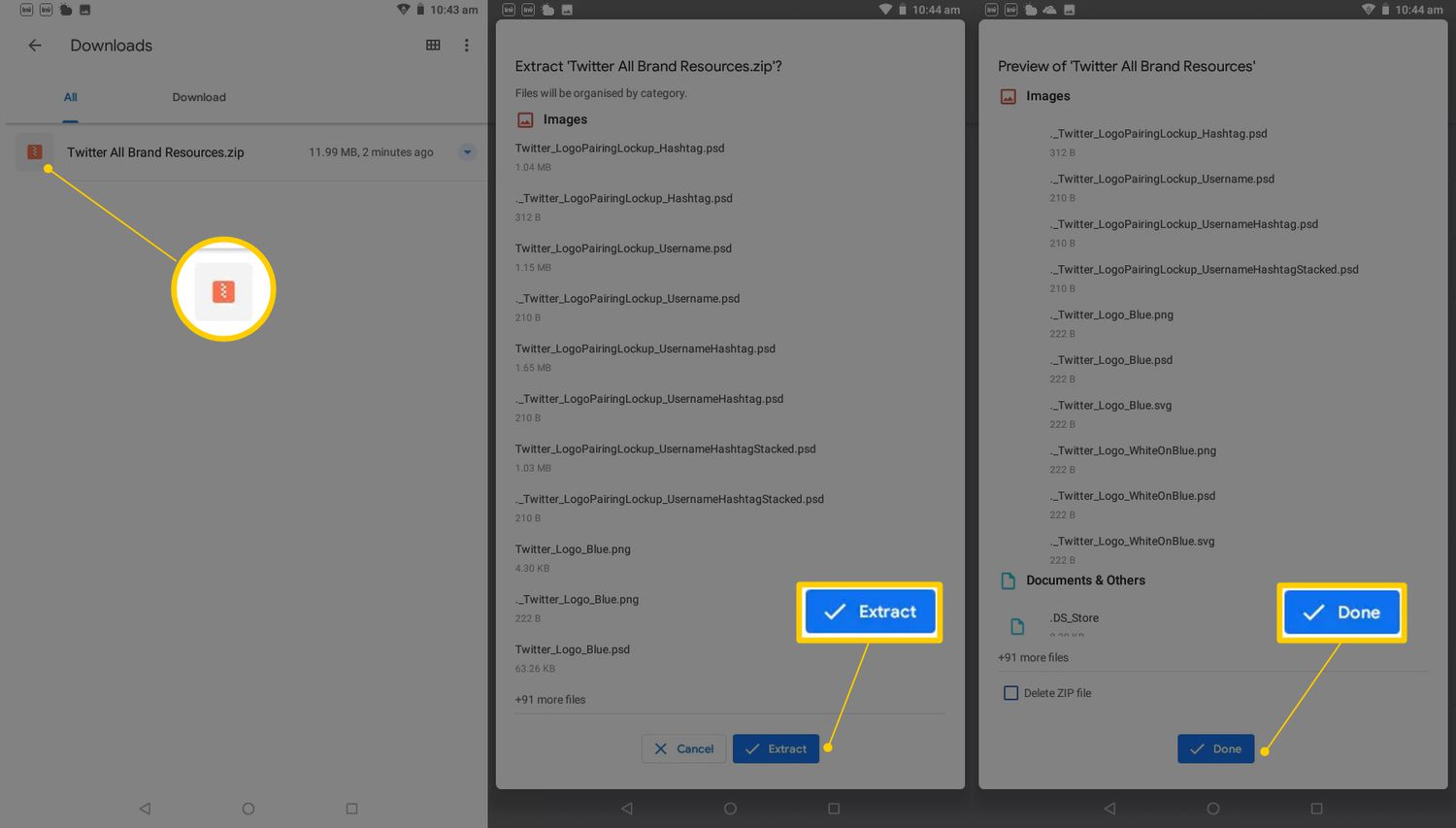Introduction
Welcome to the world of Android tablets, where you have the convenience of carrying your files and documents wherever you go. Whether you’re a student, a professional, or someone who simply enjoys using their tablet for various purposes, managing your files effectively is crucial. In this article, we will explore various techniques and strategies to help you efficiently handle files on your Android tablet.
File management on an Android tablet refers to the processes of organizing, transferring, and deleting files and folders. If you are new to using an Android tablet, you may be unfamiliar with the built-in file management system and the features it offers. Understanding how to navigate and make the most of your tablet’s file manager app is essential for optimizing your file management experience.
In addition to the built-in file manager, we will also explore other methods of file transfer, such as using cloud storage services, and discuss how to manage downloads effectively. Furthermore, we will provide you with some useful tips and tricks to streamline your file management workflow on your Android tablet.
By implementing the techniques discussed in this article, you can declutter your device, organize your files in a logical manner, and ensure that you can access your important documents whenever you need them. So, let’s dive in and learn how to manage files on your Android tablet like a pro!
Understanding File Management on Android Tablets
Before delving into the specifics of managing files on your Android tablet, it is important to have a basic understanding of how file management works on this platform. Android tablets come equipped with a built-in file manager app that allows you to navigate through your device’s storage and access your files and folders.
The file manager provides you with an interface to view, copy, move, rename, and delete files. It also allows you to create new folders and organize your files in a way that makes sense to you.
One key aspect of file management on Android tablets is the concept of file types. Android recognizes various file formats, such as documents, images, videos, audio files, and more. The file manager app categorizes your files based on their formats, making it easier for you to locate specific types of files.
Additionally, Android tablets support expandable storage in the form of SD cards or external storage devices. This means you can increase your device’s storage capacity by inserting an SD card and using it to store files and media.
Another important aspect of file management on Android tablets is file permissions. Android employs a permission system that determines which apps have access to certain files or folders on your device. You have the ability to modify these permissions to control the privacy and security of your files.
Android tablets also provide the ability to share files with other devices using various methods such as Wi-Fi Direct, Bluetooth, or by connecting your tablet to a computer through a USB cable.
Understanding these fundamental concepts of file management on Android tablets will enable you to navigate the file manager app seamlessly and perform various file management tasks effortlessly. Now that we have a solid understanding of the basics, let’s move on to exploring the built-in file manager app and its features in more detail.
Using the Built-in File Manager App
Android tablets come with a built-in file manager app that serves as your primary tool for managing files and folders on your device. Depending on the brand and model of your tablet, the file manager app may have different names, such as “Files,” “My Files,” or “File Manager.” The functionality, however, remains largely the same.
When you open the file manager app, you’ll be presented with a user-friendly interface that displays the various files and folders stored on your tablet. The app typically categorizes files based on their types, making it easy to locate documents, images, videos, and other file formats.
To access a file or folder, simply tap on its icon. This will open a preview or provide you with options to open the file using compatible apps installed on your tablet. For example, tapping on a document file may give you the option to open it in a document editing app like Google Docs or Microsoft Word.
The file manager app also allows you to perform operations on files and folders, such as copying, moving, renaming, and deleting. To perform these actions, simply long-press on the file or folder you wish to manage and select the appropriate option from the toolbar or context menu.
Creating new folders is another essential feature offered by the file manager app. This allows you to organize your files in a way that suits your needs. To create a new folder, navigate to the location where you want to create it, tap on the “New” or “+” button, and select “Folder.” Give the folder a name and it will be created in the desired location.
Furthermore, the file manager app may offer additional features such as a search functionality, which allows you to quickly find specific files or folders by entering keywords or file names in the search bar. Some file manager apps also include a recycle bin or trash folder, where deleted files are stored temporarily before being permanently deleted.
By utilizing the features and functions of the built-in file manager app, you can effortlessly manage and organize your files and folders on your Android tablet. Next, we will explore techniques for effectively organizing your files and folders for easy access and retrieval.
Organizing Files and Folders
Keeping your files and folders organized is essential for efficient file management on your Android tablet. A well-organized file structure allows you to quickly locate and access the files you need, saving you time and frustration. Here are some tips for organizing your files and folders effectively:
- Create a logical folder structure: Start by creating main folders for different categories, such as Documents, Photos, Videos, Music, and Downloads. Within each main folder, create subfolders to further categorize your files. For example, within the Documents folder, you could create subfolders for work-related documents, personal documents, and so on. This hierarchical structure makes it easier to find specific files.
- Use descriptive file names: When saving files, give them clear and descriptive names that reflect their content. Avoid generic or vague names like “Untitled” or “New Document.” Instead, include keywords or relevant information in the file name to make it easier to identify later on.
- Date-based organization: If you frequently work with files that require a chronological order, consider organizing them by date. Create folders for each year or month and place the files accordingly. This method can be useful for files like invoices, receipts, or project documents.
- Utilize tags or labels: Some file manager apps may offer the option to assign tags or labels to files. This allows you to categorize files based on specific criteria, such as color-coded tags for priority or tags indicating the status of a project. Tags or labels can help you easily filter and search for files based on specific attributes.
- Regularly declutter: To maintain an organized file system, periodically review and delete unnecessary files. As you work with your tablet, files can accumulate over time, taking up valuable storage space. Be mindful of files that are no longer needed and delete them to keep your storage clutter-free.
Remember to regularly back up your important files, either by syncing them to cloud storage services or transferring them to an external device. This provides an additional layer of protection and ensures that your files are safe in case of any unforeseen events.
By implementing these techniques and developing a systematic approach to file organization, you can efficiently manage your files and keep your Android tablet clutter-free.
File Transfer Methods
Transferring files to and from your Android tablet is a common task, whether you need to share documents with colleagues, transfer media files to your tablet, or back up important files. Fortunately, there are various methods available to facilitate file transfer. Let’s explore some of the most common file transfer methods:
- USB Cable: The traditional method of transferring files between your Android tablet and a computer is by using a USB cable. Connect your tablet to your computer using the USB cable, and it will appear as an external storage device. Simply drag and drop files between your tablet and computer to transfer them.
- Bluetooth: Bluetooth technology allows you to wirelessly transfer files between your Android tablet and other Bluetooth-enabled devices. Enable Bluetooth on both devices, pair them if necessary, and then select the files you want to send. Use the “Share” or “Send” option and choose Bluetooth as the transfer method.
- Wi-Fi Transfer: Many file manager apps or third-party apps offer wireless file transfer using Wi-Fi. With this method, both your tablet and the receiving device need to be connected to the same Wi-Fi network. Open the file manager app, select the files you want to transfer, and choose the Wi-Fi transfer option.
- Email Attachments: For smaller files, you can send them as email attachments directly from your Android tablet. Compose an email, attach the files you want to send, and enter the recipient’s email address. Be mindful of file size limitations imposed by email providers.
- Cloud Storage Services: Cloud storage services like Google Drive, Dropbox, and OneDrive offer seamless file synchronization and transfer between devices. Simply upload files from your tablet to the cloud storage service, and you can access and download them on any other device with internet access.
- Third-Party File Transfer Apps: If the built-in file manager app on your Android tablet lacks certain file transfer features, you can explore third-party file transfer apps available on the Google Play Store. These apps often provide additional functionality and flexibility for transferring files.
Choose the file transfer method that best suits your needs and preferences. Consider factors such as file size, transfer speed, convenience, and compatibility with different devices.
Having multiple file transfer methods at your disposal allows you to transfer files in a way that is most convenient for your specific situation. Whether you need to transfer files to a colleague, back up important documents, or simply share media files, these methods provide you with the flexibility and efficiency to manage your files effectively.
Cloud Storage Options
Cloud storage has revolutionized the way we manage and access our files. It offers a convenient and secure way to store, sync, and share files across multiple devices. Android tablets provide seamless integration with various cloud storage services, giving you the flexibility to access your files from anywhere. Let’s explore some popular cloud storage options:
- Google Drive: As an Android user, you have the advantage of having Google Drive pre-installed on your tablet. It provides you with 15 GB of free storage, which is shared across Google services like Gmail and Google Photos. Google Drive allows you to upload, store, and access various file types, as well as collaborate on documents with others using Google Docs.
- Dropbox: Dropbox is a widely-used cloud storage service that offers file synchronization and collaboration features. It provides a generous amount of free storage space and offers seamless integration with many apps. With Dropbox, you can easily upload files from your Android tablet, access them from any device, and share them with others.
- OneDrive: If you are heavily invested in the Microsoft ecosystem, OneDrive is a great option for cloud storage. It offers deep integration with Windows devices and Microsoft Office apps. OneDrive provides considerable free storage space, and you can easily manage and access your files on your Android tablet using the dedicated OneDrive app.
- Box: Box is a cloud storage service designed with enterprise users in mind. It offers secure file storage, collaboration tools, and powerful admin controls. While Box is popular among businesses, it is also a viable option for individual users who require advanced security features and robust file management capabilities.
- Amazon Drive: Amazon Drive provides cloud storage specifically for Amazon customers. It offers free storage for Amazon Prime members and paid plans for non-Prime members. With Amazon Drive, you can store and access files from your Android tablet, as well as enjoy additional benefits like photo storage and Prime member discounts.
When choosing a cloud storage service, consider factors such as storage capacity, ease of use, collaboration features, security measures, and pricing. It is also important to ensure compatibility with your Android tablet and any specific apps or workflows you rely on.
By utilizing cloud storage options, you can free up storage space on your Android tablet, access your files from any device, and easily share them with others. Cloud storage is a convenient solution for ensuring the availability and safety of your files, no matter where you are.
Managing Downloads
Downloading files is a common activity on Android tablets, whether it’s downloading documents, images, videos, or apps. Effective management of downloaded files is crucial to keep your tablet’s storage organized and to easily access the files you need. Here are some tips for managing your downloads:
- Choose download location: When downloading files, be mindful of the location where they are being saved. By default, downloads are typically saved in the “Downloads” folder. However, you can change the download location to a more appropriate folder or to an external SD card if available, depending on your device’s settings.
- Regularly clean up downloads: Downloads can accumulate over time and take up valuable storage space on your tablet. Periodically go through your downloads folder and delete files that you no longer need. This will help keep your storage clutter-free and ensure that you have sufficient space for new downloads.
- Organize downloaded files: Similar to organizing other files and folders, consider creating separate folders for different types of downloads. For example, you could have separate folders for documents, images, videos, and apps. This way, you can easily locate specific types of downloads when needed.
- Scan downloaded files for malware: It’s essential to be cautious when downloading files from the internet to protect your tablet from malware or viruses. Use reputable antivirus apps to scan downloaded files before opening or installing them. This will help ensure the security of your tablet and the integrity of your files.
- Manage download settings: Android tablets allow you to customize various download settings to fit your preferences. You can choose to receive notifications when downloads are complete, enable or disable Wi-Fi-only downloads, and select the default app for opening specific file types. Adjust these settings to enhance your download management experience.
In addition to these tips, consider utilizing a dedicated download manager app from the Google Play Store. These apps provide advanced download management features, such as pausing and resuming downloads, scheduling downloads, and organizing files by category or date.
By effectively managing your downloads, you can keep your tablet’s storage organized, protect your device from malicious files, and ensure that you have quick and easy access to your downloaded files when you need them.
Deleting and Recovering Files
File deletion is a common task when managing files on your Android tablet. Whether you’re trying to free up storage space or removing unnecessary files, it’s important to understand the process of deleting files and, if needed, how to recover them. Here’s what you need to know about deleting and recovering files:
Deleting Files:
- Deleting files on an Android tablet is a straightforward process. Open the file manager app or navigate to the location where the file is saved.
- Long-press on the file you want to delete to select it. You can select multiple files if you want to delete them simultaneously.
- Tap on the delete or trash bin icon, usually located in the action toolbar or menu.
- Confirm the deletion when prompted.
- Deleted files are typically moved to a trash or recycle bin folder where they are temporarily stored. From there, you can choose to permanently delete them or restore them if needed.
Recovering Files:
- If you accidentally delete a file and realize you need it back, there are a few ways to recover it:
- If your file manager app has a dedicated trash or recycle bin folder, open it and locate the deleted file.
- Long-press on the file you want to restore and choose the restore or move option. This will move the file back to its original location.
- If your file manager app doesn’t have a trash or recycle bin folder, you can use third-party file recovery apps from the Google Play Store. These apps can help you retrieve deleted files by scanning your device’s storage for recoverable data.
- It’s important to note that the success of file recovery depends on various factors, such as the time elapsed since the file was deleted and whether the space it occupied has been overwritten by new data. Therefore, it’s best to attempt file recovery as soon as possible after deletion.
Remember to regularly empty the trash or recycle bin folder to permanently delete files that you no longer need. Be cautious when deleting files, especially if they are of critical importance, and consider making regular backups to prevent permanent data loss.
By understanding how to properly delete and, if necessary, recover files on your Android tablet, you can confidently manage your files without the fear of losing important data.
Tips and Tricks for Efficient File Management
Efficient file management on your Android tablet can significantly improve your productivity and make it easier to access and organize your files. Here are some tips and tricks to help you streamline your file management workflow:
- Utilize shortcuts: Take advantage of shortcuts to quickly access frequently used files or folders. Android allows you to create shortcuts on your home screen, making it easy to open them with just a single tap.
- Use file compression: If you have a large number of files or need to transfer multiple files at once, consider compressing them into a single archive folder. This reduces the file size and makes it more convenient to handle and share multiple files.
- Customize your file manager: Explore the settings of your file manager app to customize its appearance and functionality. You may have options to change the view mode, sort files by different criteria, or enable additional features that suit your needs.
- Make use of search: Most file manager apps have a search function that allows you to quickly find files by name or keywords. This can save you time when looking for specific files amidst a large number of folders or documents.
- Take advantage of cloud syncing: Sync your files with cloud storage services to automatically back them up and access them from any device. This ensures that your files are always up to date and easily accessible, even when you switch devices.
- Regularly organize and declutter: Set aside some time periodically to organize your files and delete any unnecessary or outdated files. Regularly decluttering ensures that your device’s storage remains optimized and that you can locate files more efficiently.
- Manage app-specific files: Some apps generate files that are specific to their functions, such as cache files or temporary files. Explore the settings of these apps to learn how to manage and clear these unnecessary files, freeing up valuable storage space.
- Consider using a file explorer app: If you prefer a more advanced file management experience, explore third-party file explorer apps available in the Google Play Store. These apps often offer a wider range of features, customizability, and enhanced file management capabilities.
By implementing these tips and tricks, you can optimize your file management workflow on your Android tablet and keep your files organized, easily accessible, and secure.
Conclusion
Managing files on your Android tablet doesn’t have to be a daunting task. With a solid understanding of file management principles and the use of efficient techniques, you can keep your files organized, easily accessible, and secure.
In this article, we explored various aspects of file management on Android tablets. We discussed the importance of understanding the built-in file manager app and its features, as well as the significance of organizing files and folders in a logical manner.
We also explored different file transfer methods, such as using USB cables, Bluetooth, Wi-Fi, email attachments, cloud storage options, and third-party file transfer apps. These methods provide you with the flexibility to transfer files to and from your Android tablet in a way that is convenient and suits your specific needs.
Furthermore, we looked at the benefits of utilizing cloud storage services, which allow you to store, sync, and access your files from anywhere. Cloud storage not only frees up your tablet’s storage space but also provides an extra layer of security for your important files.
In addition, we discussed the management of downloads, the process of deleting and recovering files, and provided tips and tricks for efficient file management. By implementing these techniques, you can ensure that your files are well-organized, easily retrievable, and protected from data loss.
Remember, efficient file management is not only about organizing and accessing your files—it also contributes to a smoother workflow, improved productivity, and a clutter-free Android tablet experience.
So, take the knowledge and strategies shared in this article and apply them to your own file management practices. Whether you’re a student, professional, or simply someone who enjoys using their Android tablet, effective file management will undoubtedly make your digital life more organized and enjoyable.









